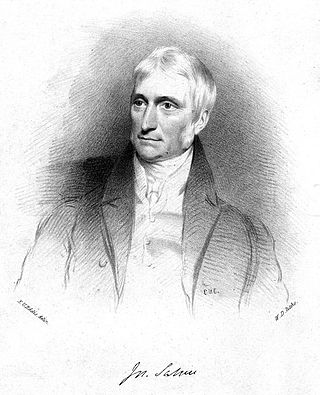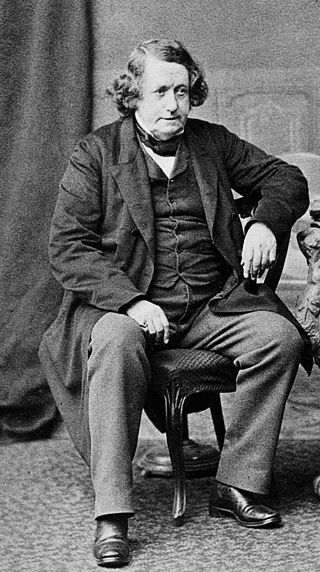Related Research Articles

The Royal Horticultural Society (RHS), founded in 1804 as the Horticultural Society of London, is the UK's leading gardening charity.

Brentford is a suburban town in West London, England and part of the London Borough of Hounslow. It lies at the confluence of the River Brent and the Thames, 8 miles (13 km) west of Charing Cross.

Kensal Green Cemetery is a cemetery in the Kensal Green area of North Kensington in the Royal Borough of Kensington and Chelsea and the London Borough of Hammersmith and Fulham in London, England. Inspired by Père Lachaise Cemetery in Paris, it was founded by the barrister George Frederick Carden. The cemetery opened in 1833 and comprises 72 acres (29 ha) of grounds, including two conservation areas, adjoining a canal. The cemetery is home to at least 33 species of bird and other wildlife. This distinctive cemetery has memorials ranging from large mausoleums housing the rich and famous to many distinctive smaller graves and includes special areas dedicated to the very young. It has three chapels and serves all faiths. It is one of the Magnificent Seven cemeteries in London.

Henry Thomas Cockburn of Bonaly, Lord Cockburn was a Scottish lawyer, judge and literary figure. He served as Solicitor General for Scotland between 1830 and 1834.

The Chelsea Physic Garden was established as the Apothecaries' Garden in London, England, in 1673 by the Worshipful Society of Apothecaries to grow plants to be used as medicines. This four acre physic garden, the term here referring to the science of healing, is among the oldest botanical gardens in Britain, after the University of Oxford Botanic Garden. Its rock garden is the oldest in Europe devoted to alpine plants and Mediterranean plants. The garden has high brick walls which trap heat, giving it a warm micro-climate, and it claims the largest fruiting olive tree in Britain and the world's northernmost grapefruit growing outdoors. Jealously guarded during the tenure of the Worshipful Society of Apothecaries, the garden became a registered charity in 1983 and was opened to the general public for the first time.

Joseph Sabine FRS was an English lawyer, naturalist and writer on horticulture.

Hugh Falconer MD FRS was a Scottish geologist, botanist, palaeontologist, and paleoanthropologist. He studied the flora, fauna, and geology of India, Assam, Burma, and most of the Mediterranean islands and was the first to suggest the modern evolutionary theory of punctuated equilibrium. He studied the Siwalik fossil beds, and may also have been the first person to discover a fossil ape.

Sir George Thomas Smart was an English musician.
The Victoria Medal of Honour (VMH) is awarded to British horticulturists resident in the United Kingdom whom the Royal Horticultural Society Council considers deserving of special honour by the Society.

Sir Harry James Veitch was an English horticulturist in the nineteenth century, who was the head of the family nursery business, James Veitch & Sons, based in Chelsea, London. He was instrumental in establishing the Chelsea Flower Show, which led to his being knighted for services to horticulture.

Robert Hogg was a Scottish nurseryman, pomologist and botanist. He published his book British Pomology in 1851, and co-edited The Florist and Pomologist: A Pictorial Monthly Magazine of Flowers, Fruits and General Horticulture.

Sir Francis Ronalds FRS was an English scientist and inventor, and arguably the first electrical engineer. He was knighted for creating the first working electric telegraph over a substantial distance. In 1816 he laid an 8-mile (13 km) length of iron wire between wooden frames in his mother's garden and sent pulses using electrostatic generators.
George Sinclair was a Scottish gardener.

Eldon House is a historic house and museum located in London, Ontario. The Eldon House property was converted into a public park, now called Harris Park. Eldon House is the oldest continued residence in the city of London. It was inhabited by the family of John and Amelia Harris from 1834 until they gave it to the City of London in 1959. The original owner, Captain John Harris, named Eldon House after the Earl of Eldon, whom he admired.
John Graefer or Johann Andreas Graeffer was a German botanist nurseryman born in Helmstedt. Graeffer/Graefer is remembered by garden historians as having introduced a number of exotic plants to British gardens and to have worked for the king of Naples at the palace of Caserta.

London Road Cemetery is a 17-hectare (42-acre) cemetery in Coventry, England, designed by Joseph Paxton and opened in 1847.
Hugh Carter (1837–1903) was an English painter, of subject paintings, portraits and landscapes.
Thomas Field Gibson FGS was a Unitarian silk manufacturer and philanthropist. He supported several novel initiatives to enhance British manufacturing quality and international trade while improving life for working people during the Industrial Revolution – particularly in Spitalfields where his business was centred. He also made important contributions to geology.
James Montgomrey ran a large timber mill in Brentford, Middlesex, that was in the family for 120 years. He also led the development of considerable infrastructure in the town to enhance public amenity.
Alfred Ronalds was an English author, artisan, and Australian pioneer, best known for his book The Fly-fisher's Entomology.
References
- 1 2 Ronalds, Hugh (1831). Pyrus Malus Brentfordiensis: or, a Concise Description of Selected Apples. London: Longman.
- 1 2 Ronalds, B.F. (2016). Sir Francis Ronalds: Father of the Electric Telegraph. London: Imperial College Press. ISBN 978-1-78326-917-4.
- 1 2 "Hugh Ronalds and Brentford Nursery". Sir Francis Ronalds and his Family. Retrieved 24 August 2017.
- ↑ "Obituary – Hugh Ronalds Jnr". Gentleman's Magazine. New Series. 1: 337–338. 1834.
- ↑ Ronalds, B.F. (2016). "The Ronalds Family in Brentford and Ontario". Brentford & Chiswick Local History Journal. 25: 14–17.
- ↑ Ronalds, B.F. (Spring 2021). "An ancestor's life seen through her recipe book". Women's History. 2 (17): 20–23.
- 1 2 3 Ronalds, B.F. (2017). "Ronalds Nurserymen in Brentford and Beyond". Garden History. 45: 82–100.
- ↑ "Obituary – Robert Ronalds". Gardeners' Chronicle. 14: 346. 1880.
- ↑ Curthoys, Mark (2009). "Hogg, Robert (1818–1897)". Oxford Dictionary of National Biography (online ed.). Oxford University Press. doi:10.1093/ref:odnb/96781.(Subscription or UK public library membership required.)
- ↑ Floud, Roderick (October 2016). "Capable Entrepreneur? Lancelot Brown and his Finances". Occasional Papers from the RHS Lindley Library. 14: 19–41.
- ↑ Desmond, Ray (1998). Kew: The History of the Royal Botanic Gardens. London: Harvill.
- ↑ "Papers of Sir Joseph Banks". State Library of NSW. 2017-08-06. Retrieved 24 August 2017.
- ↑ "Obituary – Hugh Ronalds Jnr". New Monthly Magazine: 421. 1834.
- ↑ Pringle, James (1995). "Historic Herbarium Specimens of Cultivated Plants at Eldon House, London, Ontario". Canadian Horticultural History. 3: 22–24.
- ↑ Ronalds, Hugh (1820). "Description of the Different Varieties of Brocoli, with an Account of the Method of Cultivating them". Transactions of the Horticultural Society of London. 3: 161–169.
- ↑ Ronalds, John (1832). "Plan and Description of a Propagating-House". Horticultural Register. 1: 626–628.
- ↑ Horticultural Society of London (1823). Report of the Garden Committee on the formation and progress of the Garden.
- ↑ "Betsey Ronalds". Sir Francis Ronalds and his Family. Retrieved 22 June 2018.
- ↑ "Elizabeth (Betsey) Ronalds". Dictionary of Unitarian and Universalist Biography. Retrieved 29 January 2025.
- ↑ Ronalds, B.F. (2018). "Elizabeth (Betsey) Ronalds (1788-1854): horticultural illustrator". Archives of Natural History. 45: 159–162. doi:10.3366/anh.2018.0493.
- ↑ "Pyrus Malus Brentfordiensis Review". Gardener's Magazine. 7: 587–590. 1831.
- ↑ "Pyrus Malus Brentfordiensis Review". Horticultural Register. 1: 68–69. 1832.
- ↑ Elliott, Brent (2010). "English Fruit Illustration in the Early Nineteenth Century, Part 1" (PDF). RHS Lindley Library Occasional Papers. 4: 37–71.
- ↑ Curl, James, ed. (2001). Kensal Green Cemetery: the origins and development of the General Cemetery of All Souls, Kensal Green, London, 1824–2001. Chichester: Phillimore.